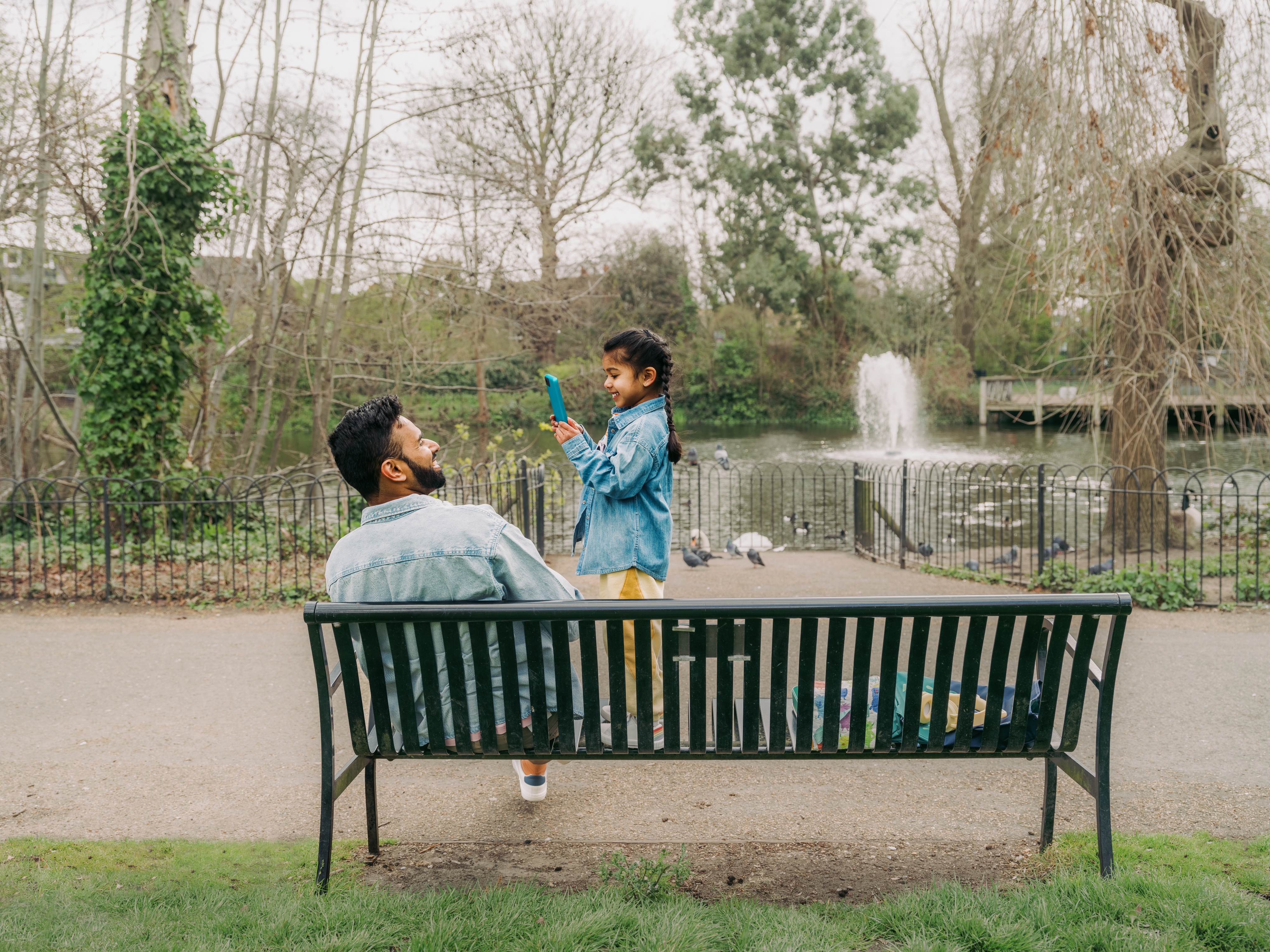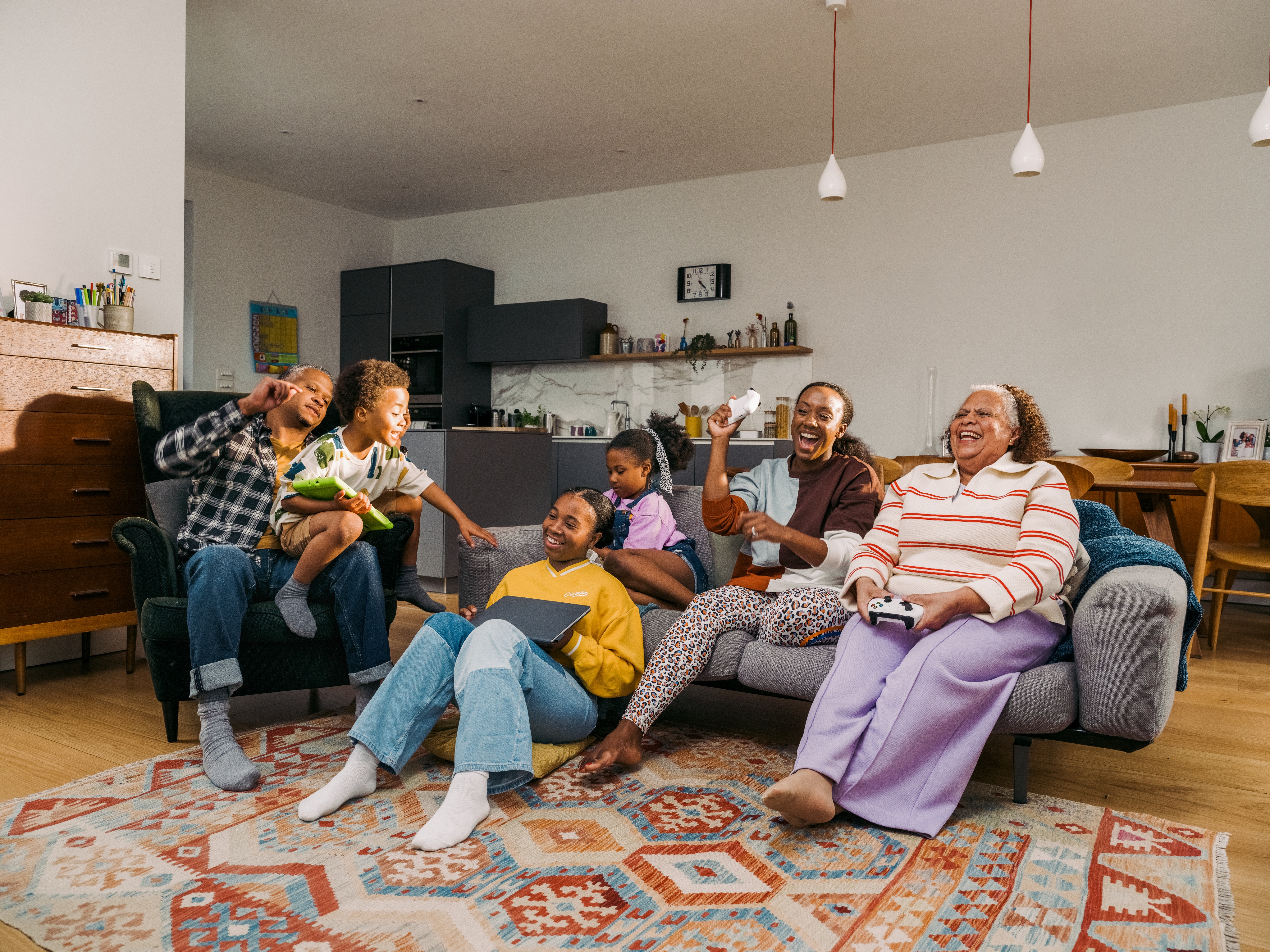7 ways your kids can socialise safely online

At Goodto we know that parents want their kids to get the most out of the digital world, from socialising and connecting with friends to learning how to stay safe online. But it’s hard to know where to start sometimes. It’s normal to be worried about who your kids are talking to and what they’re doing online. You may feel apprehensive about how social media will affect your child’s mental health. We’ve all heard about how too much screen time can damage sleep and overall well-being.
According to YouGov, over half of children under seven already own a mobile phone. So if your kids aren’t already asking you for their first device, they soon will. Whether you’re planning to give your child their first device or need to upgrade their phone or tablet, Black Friday and hype around the latest devices can add pressure to parents when choosing the right tech.
EE can help. We’ve partnered with the brand and its online safety experts to give parents the tools and tech to keep kids safe online, whatever age they are. We can guide you in choosing the right device and age-appropriate settings to ensure your child learns and socialises safely.
7 steps parents can take to ensure kids are safe and confident online
1. Help your child prepare to go online
We understand the importance of ensuring your child's well-being as they embark on their first phone experience. That's why EE has created a fun and educational course that fosters safe and kind online behaviour called EE PhoneSmart.
EE PhoneSmart delves into subjects such as cyberbullying, oversharing online, using tech in a healthy way and identifying fake news. It uses anime characters who guide children through a series of interactive quizzes and pop-up facts to make it playful and memorable. Once your child completes all five episodes, they will proudly earn their PhoneSmart Licence, a symbol of their readiness to embrace the digital world responsibly. You’ll also get your own Parent Dashboard to monitor your child's progress and find additional resources.
It's free and available to any kid on any network.

2. Set parental controls and WiFi controls
When considering a device for your child, check to make sure it comes with built-in parental controls. This means you can set age-appropriate filters, restrict access to specific sites and games, limit your child’s screen time and prevent accidental or unauthorised spending in gaming apps. If your child uses social media, each platform will have its own privacy and safety settings, so take the time to explore these with your child.
EE goes further by allowing you to set parental controls at a network level with WiFi Controls that protect your kids by controlling what they can access online. Plus, you can schedule or pause your WiFi whenever you need to - great if you want to encourage wind-down time in the evenings so your kids (and you!) can sleep better. All EE phones also offer Content Lock, which you can adjust to a level of security you’re comfortable with.
3. Discuss positive and negative aspects of the internet early on
Dr. Susan Wilkinson, a Specialist Senior Child and Educational Psychologist for The Child and Educational Psychology Practice, recommends using every opportunity you can to discuss the highs and lows of getting online. “Simply talking to your child about how annoying it is when games or sites take a while to load, or the WiFi drops out, is setting the building blocks for them to talk openly about their responses in the future when more important issues arise.”
“There will inevitably come a time when kids will come across something that parents would prefer they didn’t - inappropriate material or cyberbullying, for example,” says Dr Wilkinson. “It’s in those moments the building blocks for communication that we laid earlier will help.”
Dr. Susan Wilkinson is a Specialist Senior Child and Educational Psychologist for The Child and Educational Psychology Practice (CEPP). Alongside her role at CEPP, Susan is a lecturer in Educational Psychology for the Doctorate in Educational Psychology (EdPsyD) at the University of East Anglia. She is a Chartered Psychologist with the British Psychological Society (BPS) and a Practitioner Psychologist with the Health and Care Professions Council (HCPC).

4. Stay curious about your child’s social media usage
It’s very likely your child will be on social media at some point if they have a device, so it pays to acknowledge that it’s an integral part of their world. It can be helpful to stay curious about your child’s social media usage, rather than dismissing it.
You could help your child set their privacy settings so they understand who will see the content they post, teach them about the risk of sharing their location or personal information, and encourage them to come to you if they have any questions or worries.
Many parents also like to join the same social networks as their kids to keep an eye on them from a safe distance. But, of course, your kids may think this is an invasion of their privacy, so it can help to discuss it with them first.
5. Teach your child about fake news
Teach your child about what fake news means. Look for real-life examples that are appropriate to your child’s age. It’s just as important to show them reliable sources of news, too, so introduce them to news sites that are credible and trustworthy. By developing these skills, your child will become better at spotting fake news and less likely to share it online.
6. Help your kids understand their digital footprint
In today’s digital age, we all leave a footprint, whether it’s social media posts, reviews on shopping sites, or photos we’ve been tagged in. Talk to your child about how this footprint can show them positively or negatively, and encourage them to come up with their own real-life examples. Conversations like this empower them to think twice before posting and can also help them be more kind and respectful online.
7. Strike a healthy balance when it comes to screen time
Even though a lot of their lives are online nowadays, it doesn’t mean they shouldn’t still have a healthy balance when it comes to screen time. It’s up to you to determine what limits you want in your house but remember, a child is unlikely to self regulate so might need some encouragement to find alternative ways to have fun without a screen. Encourage them to find a new hobby or sport or meet up with friends in a local park instead of going online all the time. Getting a good balance early on will help your child develop healthy screen habits for life.
Parenting advice, hot topics, best buys and family finance tips delivered straight to your inbox.
Joanne Lewsley is mum to a tween, and freelance copywriter and editor who creates parenting, health and lifestyle content for evidence-based websites, including BabyCentre, Live Science, Medical News Today and more.

